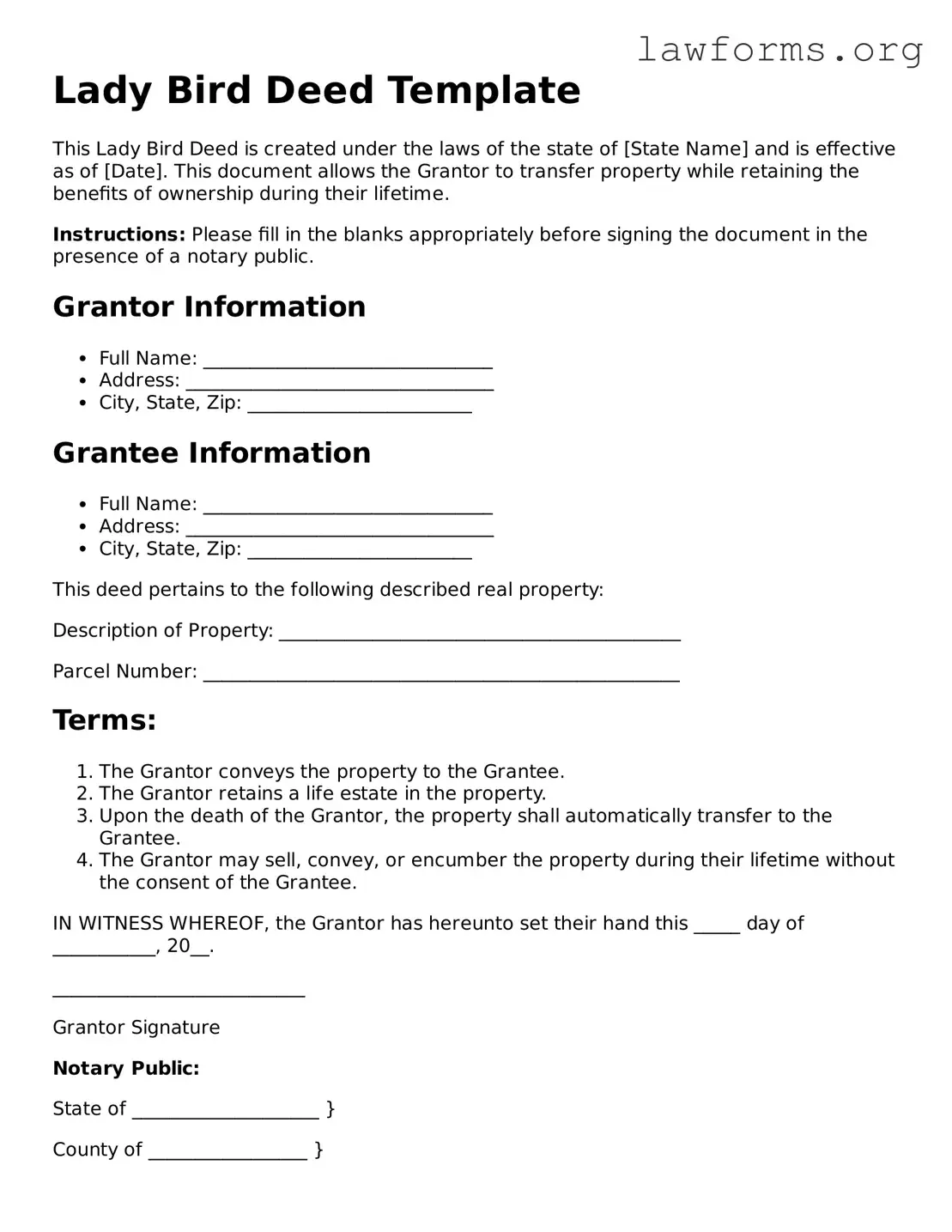Lady Bird Deed Template
This Lady Bird Deed is created under the laws of the state of [State Name] and is effective as of [Date]. This document allows the Grantor to transfer property while retaining the benefits of ownership during their lifetime.
Instructions: Please fill in the blanks appropriately before signing the document in the presence of a notary public.
Grantor Information
- Full Name: _______________________________
- Address: _________________________________
- City, State, Zip: ________________________
Grantee Information
- Full Name: _______________________________
- Address: _________________________________
- City, State, Zip: ________________________
This deed pertains to the following described real property:
Description of Property: ___________________________________________
Parcel Number: ___________________________________________________
Terms:
- The Grantor conveys the property to the Grantee.
- The Grantor retains a life estate in the property.
- Upon the death of the Grantor, the property shall automatically transfer to the Grantee.
- The Grantor may sell, convey, or encumber the property during their lifetime without the consent of the Grantee.
IN WITNESS WHEREOF, the Grantor has hereunto set their hand this _____ day of ___________, 20__.
___________________________
Grantor Signature
Notary Public:
State of ____________________ }
County of _________________ }
Subscribed and sworn to before me this _____ day of ___________, 20__.
___________________________
Notary Public Signature
My commission expires: ____________________
